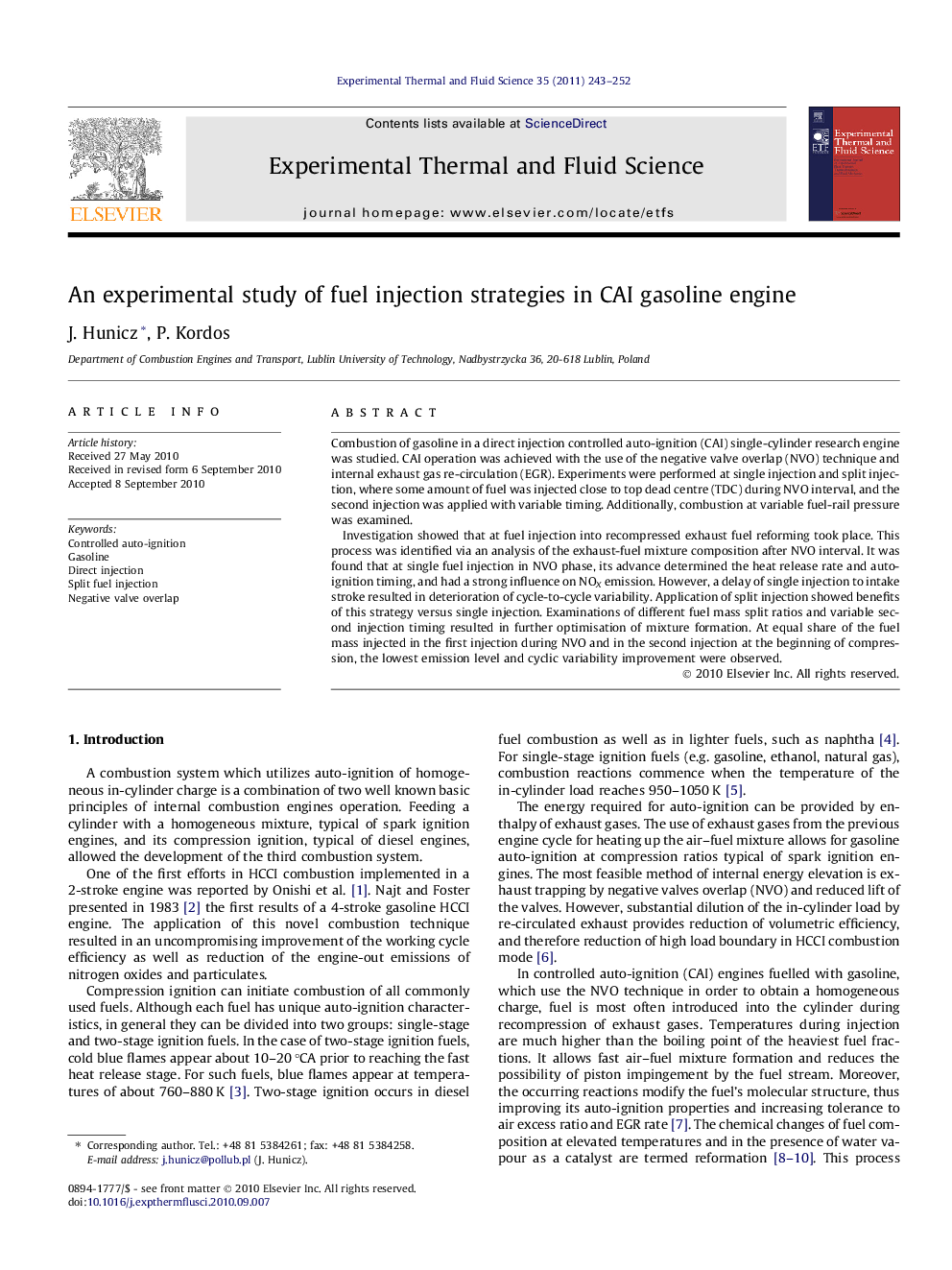| Article ID | Journal | Published Year | Pages | File Type |
|---|---|---|---|---|
| 652056 | Experimental Thermal and Fluid Science | 2011 | 10 Pages |
Abstract
Investigation showed that at fuel injection into recompressed exhaust fuel reforming took place. This process was identified via an analysis of the exhaust-fuel mixture composition after NVO interval. It was found that at single fuel injection in NVO phase, its advance determined the heat release rate and auto-ignition timing, and had a strong influence on NOX emission. However, a delay of single injection to intake stroke resulted in deterioration of cycle-to-cycle variability. Application of split injection showed benefits of this strategy versus single injection. Examinations of different fuel mass split ratios and variable second injection timing resulted in further optimisation of mixture formation. At equal share of the fuel mass injected in the first injection during NVO and in the second injection at the beginning of compression, the lowest emission level and cyclic variability improvement were observed.
Related Topics
Physical Sciences and Engineering
Chemical Engineering
Fluid Flow and Transfer Processes
Authors
J. Hunicz, P. Kordos,
